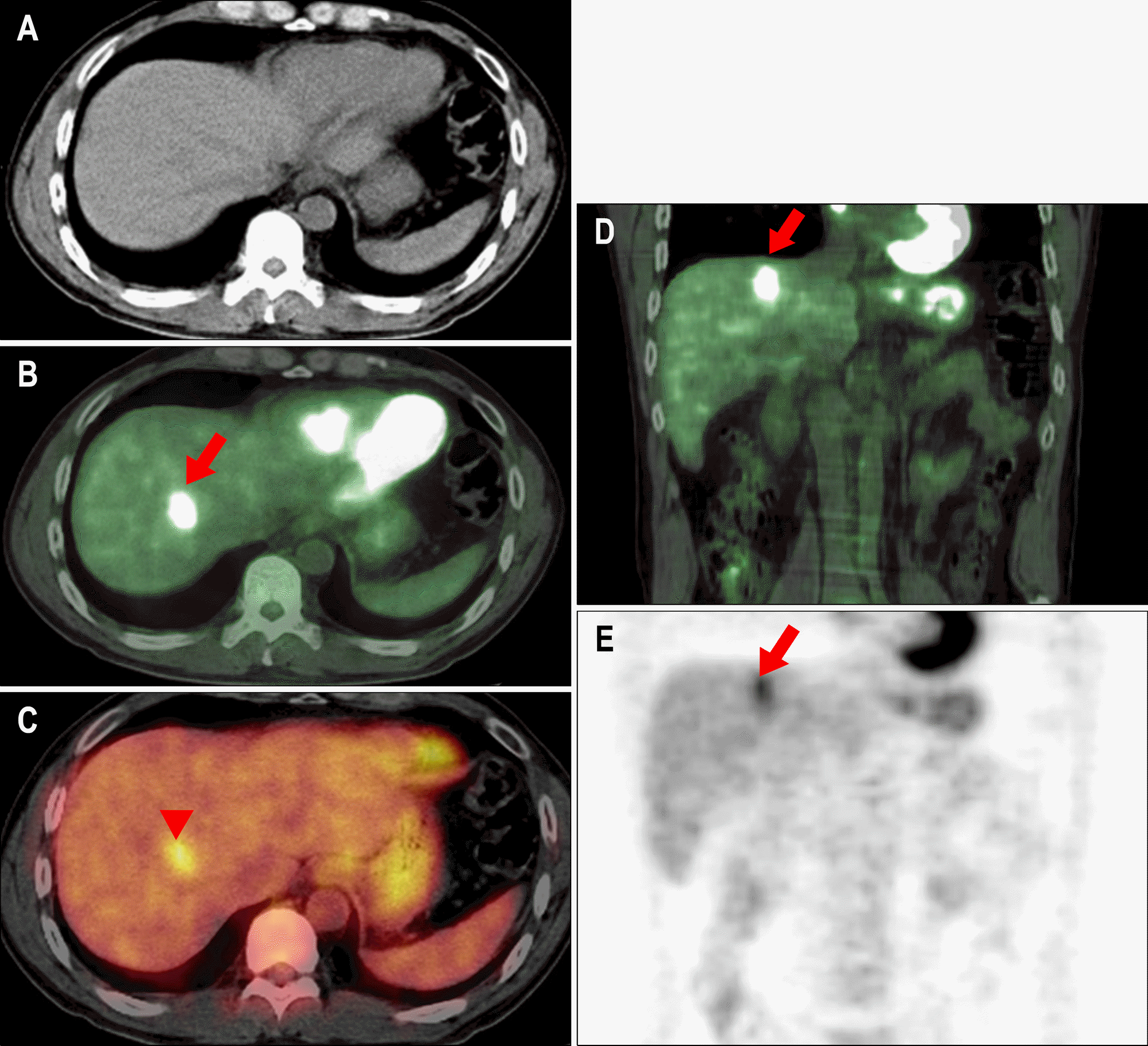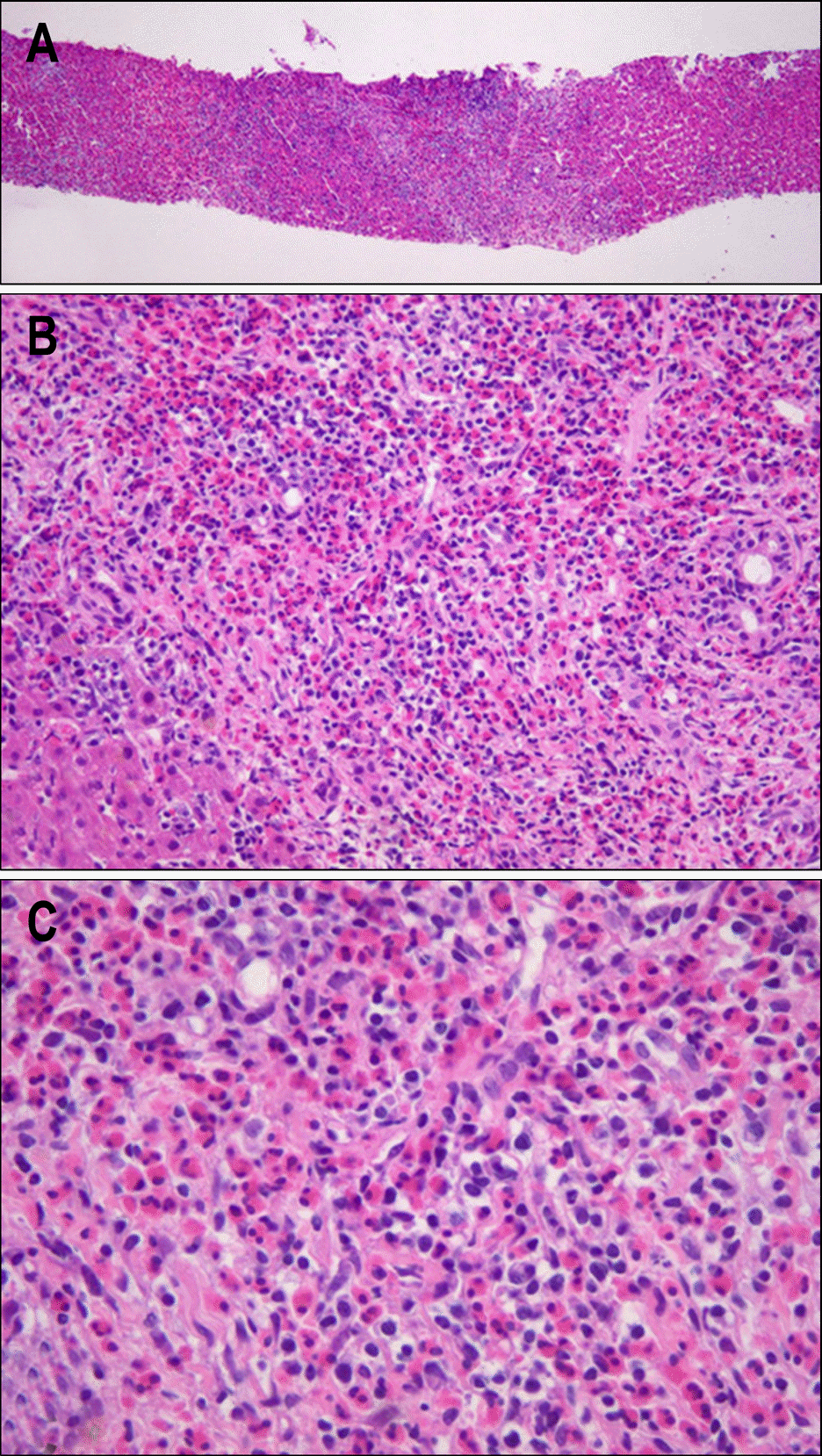REFERENCES
1. Fantone JC, Ward PA. Role of oxygen-derived free radicals and metabolites in leukocyte-dependent inflammatory reactions. Am J Pathol. 1982; 107:395–418.
2. Kim WH, Kim SH, Kim YH, et al. Fluorine-18-FDG PET findings of focal eosinophilic liver disease: correlation with CT and/or MRI, laboratory, and pathologic findings. Abdom Imaging. 2009; 11:[Epub ahead of print].

3. Hong SW, Kim H, Park C, Lee SI. Eosinophilic liver abscess in patients with gastric carcinoma. Korean J Pathol. 1993; 27:27–33.
4. Kang HR, Kwon HS, Song WJ, et al. Analysis of 54 cases of eosinophilic liver abscess-underlying diseases and clinical characteristics. Korean J Asthma, Allergy Clin Immunol. 2004; 24:229–235.
6. Fauci AS, Harley JB, Roberts WC, Ferrans VJ, Gralnick HR, Bjornson BH: NIH conference. The idiopathic hypereosinophilic syndrome. Clinical pathologic and therapeutic consideration. Ann Intern Med. 1982; 97:78–92.
Fig. 1.
Liver ultrasonography showed 0.6×1.8 cm sized hypoechoic lesion at S7, which suggested metastatic lesion (A, arrow head). Dynamic enhanced abdominal CT showed multiple low density nodules and slightly marginal enhanced scattered lesions during arterial phase (B, arrowhead). In portal phase, low density lesions with irregular margin were also found (C, narrow arrow head).

Fig. 2.
MRI images. (A) There were multiple iso to low signal intensity lesions at both lobes in T1WI. (B) Multiple small scattered lesions showed high signal intensity in T2WI. They suggested possibility of malignany.

Fig. 3.
18F-FDG PET/CT findings. Early phase revealed a focal hypermetabolic mass in the S7 right hepatic lobe, SUV of 2.9 (arrow, B, D). Delayed image showed much increased FDG uptake, SUV of 4.1 (arrow head, C). And fully attenuated image also had FGD uptake (E). This lesion should be differentiated from liver tumors such as metastasis and hepatocellular carcinoma.





 PDF
PDF ePub
ePub Citation
Citation Print
Print



 XML Download
XML Download